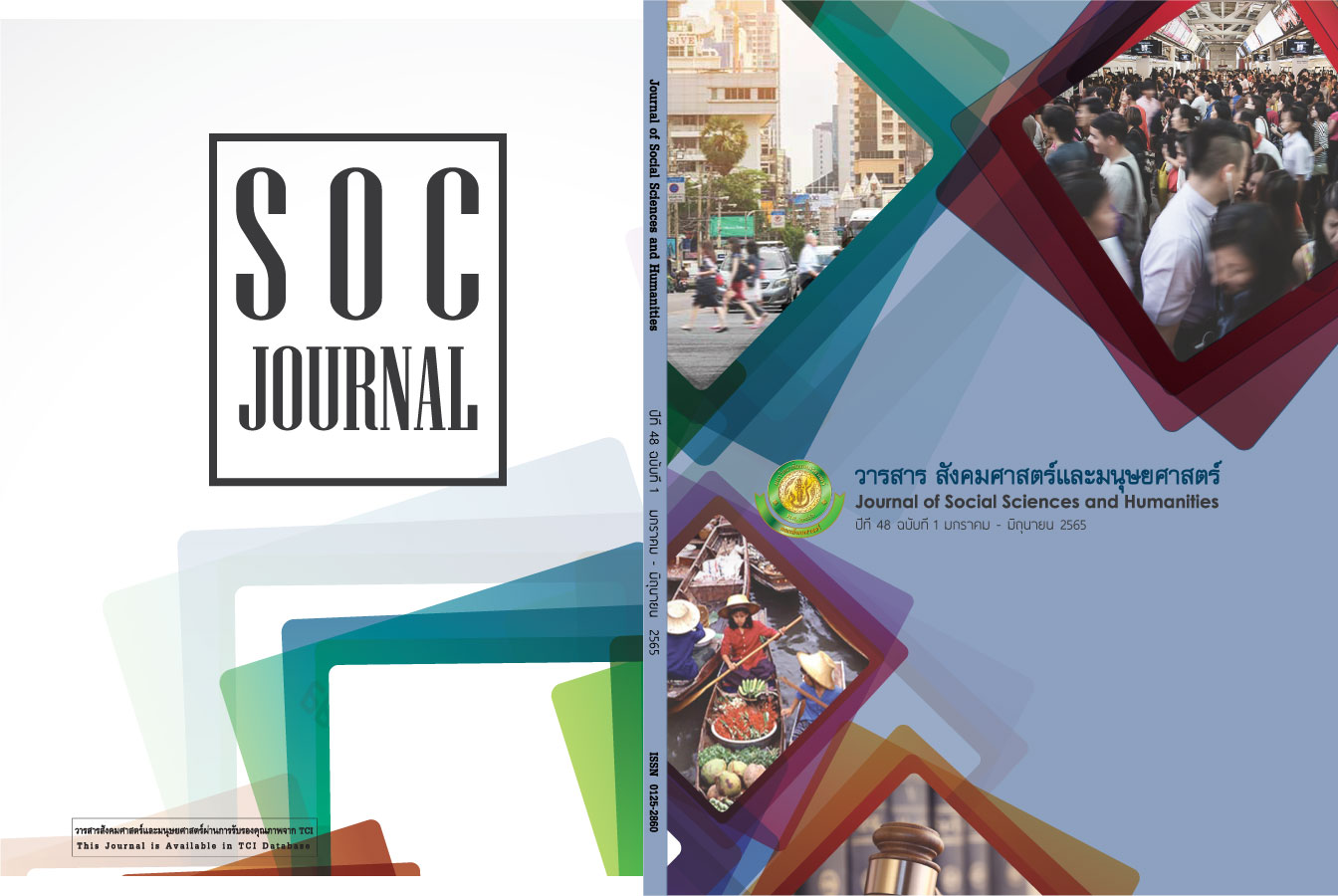Minimalist Interior Design and Decoration: Class Distinction in the Adaptation of Japanese Culture
Main Article Content
บทคัดย่อ
Class distinction lies at the core of peoples’ preferences in interior design and home decoration. This paper attempts to understand the growing popularity of minimalist interior designs as a part of the social study of architecture in Thailand. Qualitative content analysis of YouTube videos about Japanese minimalist home décor is used to gain an understanding of capital accumulation and the distinctive social status of Thai minimalist houseowners. This paper begins with an attempt to understand the growing popularity of interior designs of Japanese minimalism in relation to the minimalist style home decoration trend in Thailand. This study suggests that the aesthetics of Japanese minimalism are accepted as representing good taste and promoting the distinctiveness of Thai middle-class people. The cultural and economic capital of houseowners encourage the taste of Japanese minimalist interior design. With restricted income, time, and space, the houseowners apply do-it-yourself home decoration in combination with affordability and functionality principles.
Article Details

อนุญาตภายใต้เงื่อนไข Creative Commons Attribution-NonCommercial-NoDerivatives 4.0 International License.
เอกสารอ้างอิง
Al Qudwa, S. (2013). Developing Simple and Economic Buildings in the Gaza Strip Using Minimalist Architecture Principles. Retrieved from http://hdl.handle.net/10072/366645.
Britannica, T. Editors of Encyclopedia (2008). Shoji. Encyclopedia Britannica. Retrieved from https://www.britannica.com/technology/shoji.
Bourdieu, P. (1979) Distinction. A Social Critique of the Judgement of Taste. Translated by R. Nice, Cambridge: Polity Press.
Hsieh, H. and Shannon, S. (2005) Three Approaches to Qualitative Content Analysis. Qualitative Health Research, 1277-1286.
Jantarangsee, A. (2009). Home Garden: Consumption of Sign Value and Consumption of Social Distinction. (Thesis of Master’s degree, Thammasart Unversity).
Lee, YS. (2021). Distinction by Indistinction: Luxury, Stealth, Minimalist Fashion. Luxury, 1-23.
Liu, A. (Ed.) (2018). Minimalist living spaces. Mulgrave: Victoria Images.
Massey, A. (2008). Interior Design Since 1900. London: Thames & Hudson.
Meissner, M. (2019). Against Accumulation: Lifestyle Minimalism, De-growth and the Present Post-Ecological Condition. Journal of Cultural Economy, 12(3), 185-200.
MUJI Retail. (2021). Retrieved from https://www.muji.com/de-en/feature/whatismuji/.
Phattanawasin, S. (2010). Courtyard Compact House: Alternative Living Pattern for Urban Context in Tropical Regions. Journal of Architectural/Planning Research and Studies, 7(2), 119-140.
Sangiempaisarnsuk, C. (2007). Economic of Symbolic Asset. Nopporn Prachakul (Ed.). Bangkok: Kobfai.
Schenker, M. (2020). The Minimalist Design Trend: Why Less is More. Creative Market. Retrieve from https://creativemarket.com/blog/minimalist-design-trend
Sklair, L. (2005). The Transnational Capitalist Class and Contemporary Architecture in Globalizing Cities. International Journal of Urban and Regional Research, 29, 485-500.
Stevens, G. (2002). The Favored Circle: The Social Foundations of Architectural Distinction. Cambridge, MA: MIT.
Strickland, E. (2000). Minimalism--origins. Bloomington, IN: Indiana University Press.
Tomley, S., Hobbs, M., Todd, & Weeks, M. (2105). The Sociology Book. London: Dorling Kindersley.
Yen, H. Y., Lin, P. H., & Lin, R. (2014). Emotional Product Design and Perceived Brand Emotion. International Journal of Advances in Psychology (IJAP), 3(2), 59-66.
Wolff, J. (2005). The Meanings of Minimalism. Contexts, 4(1), 65–71.
AomThara. (2020). Young Couple’s Japanese Minimal House: Home Décor with Budget of 650,000 Baht [Video file]. Retrieved from https://www.youtube.com/watch?v=vcJ7rqCaCZU [in Thai]
AomThara. (2020). Small Budget (700,000), still a lot of MUJI: Minimalist self-decoration house. [Video file]. Retrieved from https://www.youtube.com/watch?v=ro6VwhxGyEU.


